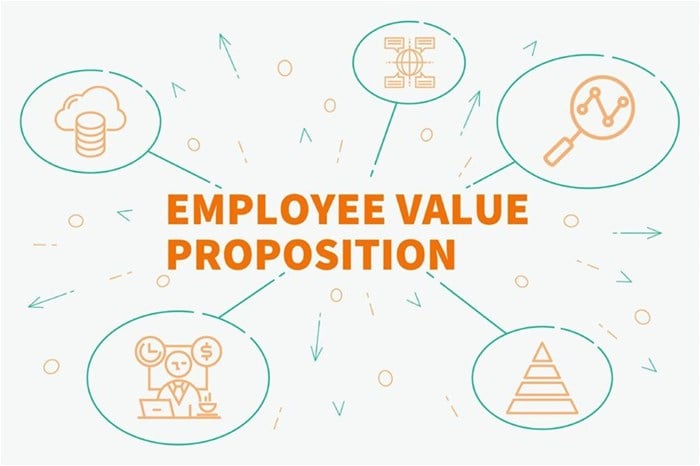In this post-pandemic hybrid working environment, does your EVP still attract talent and deliver real value? Is it time to dissolve the old model or evolve it into a more human-centric approach to value?
What is valuable to you? Time? Money? Flexibility? And is it the same for the employee on the far corner of your Teams screen? The question of how people find value in what they do and why they do it has been haunting HR recruitment policies for decades. And that hasn’t changed. But everything else has.
The question is, has your Employee Value Proposition (EVP) evolved to deliver real value in a post-pandemic world? This is because in this new era, where a growing talent shortage meets evolving candidate motivations at the corner of a gig economy, employers are competing against much more than just each other to retain and attract top talent.
From work-life balance to work-life integration
It probably feels like just yesterday when employee wellness progammes, company day-care and volunteerism started appearing on every EVP and “work-life balance” was the talk of the water cooler. But now, with hybrid working environments blurring traditional boundaries of work/life, time/space, on/off the old work-life balance goal has been upgraded to work-life integration, which demands a more human-centric approach to framing and delivering value to employees.
Creating a more human-centric EVP
In the new EVP “employees are people, not just workers, work is a subset of life, not separate from it; and value comes through feelings, not just features,” says Carolina Valencia, VP of global management consultancy, Gartner.
The big shift is really all about adopting a human-centric approach to employee value, which starts with asking how the business can help employees to feel more understood, autonomous, invested, cared for and valued, even beyond work and working hours. This means the focus is less about helping employees balance their busy lives and more about helping them create a seamless environment where their personal life and work life can co-exist, instead of compete for their time and attention.
Creating an EVP framework that drives work-life integration
In this era of hyper-personalisation, companies need to create a flexible EVP framework that will deliver a balance between talent expectations and the company’s actions. Here are some key actions to consider:
Creating workable flexibility
Employees want more control over where they work and when. Instead of just offering the option to work from home a few days of the week, you could let employees choose what days of the week they are in the office or even what times they start and end their working day. The point is not to compromise your business deliverables but rather to rethink and re-evaluate the parameters needed to deliver these.
Driving purpose on purpose
What is your company’s mission beyond making a profit? Do you strive to create a more tolerant society? Want to create a greener, cleaner planet? In other words, what social ills or topical discussions (mental health, LGBTIA, climate change) are you prepared to support because it aligns with your values and gives your employees a real purpose beyond their KPIs.
Making personal growth part of the package
When you view growth from a human-centric perspective, the professional and personal are equally supported and enabled. You might consider offering your employees sessions with a career coach, where they get to define and design their development journey in a way that meets their needs.
Selfcare as a priority
Having a wellness programme is only one part of the picture. Companies need to reinforce that they care about their employees’ wellbeing by making sure they take the time and space they need to use and integrate the wellbeing offerings into their daily lives.
Using tech to create human connections
Do you know what your employees are feeling? How do they want to be supported and rewarded? Being human-centric means staying connected to what your employees are feeling at all times. One way to do this is by leveraging technology across all stages of the employee journey to make sure you keep your finger on the pulse of your employees’ needs and respond accordingly.
An EVP that delivers a healthy work-life integration could deliver actions like:
- Home office stipends – once off or recurring to cover equipment needs (this could include UPS power supplies to address loadshedding).
- Subsidised food deliveries or monthly flexible meal stipends (replaces the old coffee machines and canteens).
- Tech support: reimbursement for ongoing tech needs.
- Mental health support: free wellness Apps or flexible wellness stipends.
- Family assist: backup childcare, caregiving support or general family stipends that support different family dynamics and needs.
Remember that what you do or don’t offer in your EVP doesn’t matter as much as making sure that the framework you adopt is as flexible and human-centric as your company aspires to be. Get that right, embed it in your internal communication strategy and the right value will follow.


















































